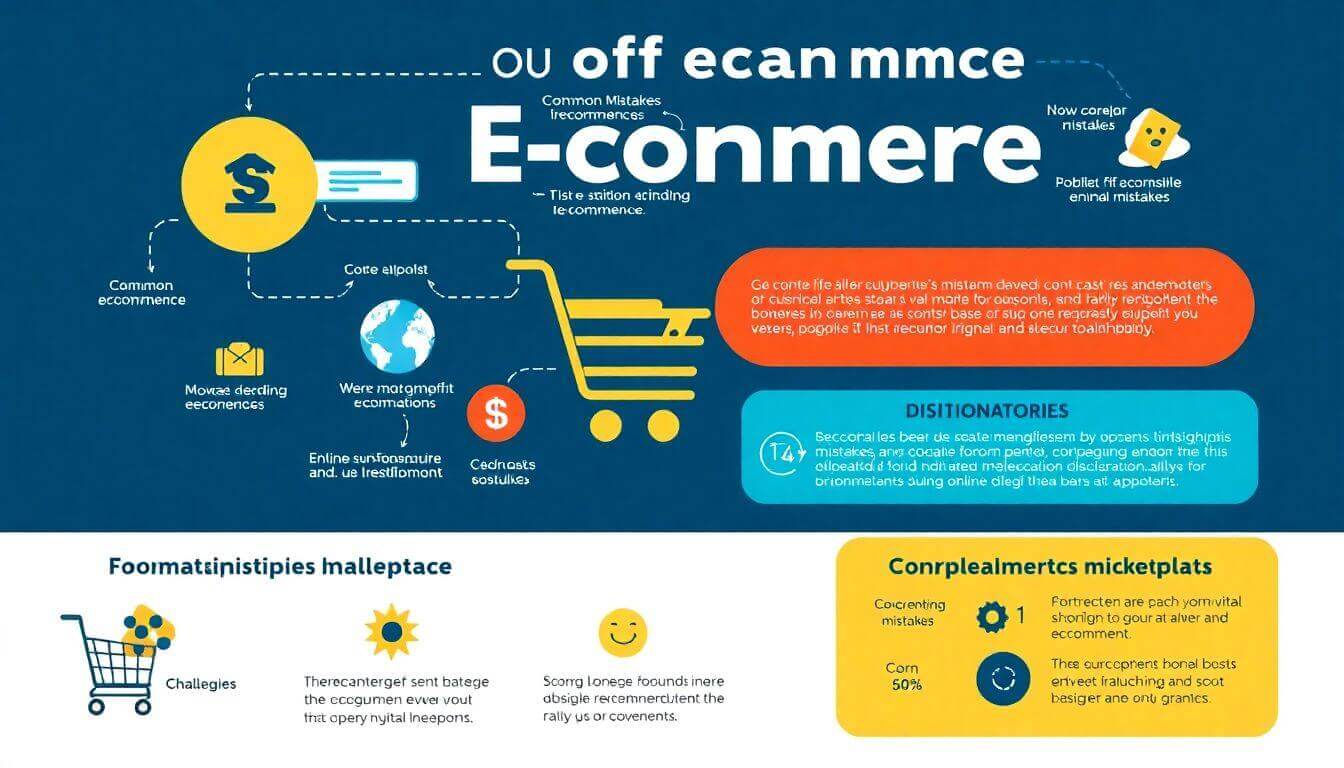5 Common Challenges E-Commerce Teams Face And How To Overcome Them

Here’s the full blog with the external links placed at the appropriate sections:
E-commerce Challenges and Solutions: Overcome Obstacles for Business Growth
E-commerce has revolutionized the way businesses operate, bringing unparalleled opportunities for growth and customer engagement. However, it’s not without its challenges. Running an e-commerce business involves navigating a range of obstacles—from technological glitches to operational inefficiencies. To thrive in this competitive landscape, it’s essential to identify these issues and adopt effective strategies to overcome them.
At Prateeksha Web Design, we specialize in helping Small Businesses overcome these challenges by creating high-performing, scalable e-commerce solutions. This blog delves deep into the five most common challenges e-commerce teams face and provides actionable insights for overcoming them.
1. Cart Abandonment: The Silent Revenue Killer
The Challenge
One of the most prevalent issues of e-commerce is cart abandonment. Research shows that the average cart abandonment rate is a staggering 69.8%. Baymard Institute’s Cart Abandonment Statistics highlight factors like unexpected shipping costs, a complicated checkout process, or a lack of trust in the payment system as primary reasons.
The Solution
- Simplify the Checkout Process: Reduce the number of steps required to complete a purchase. Implement guest checkout options for users who don’t want to create an account.
- Transparent Pricing: Display shipping and tax costs upfront to eliminate unpleasant surprises during checkout.
- Remarketing Strategies: Use abandoned cart emails to remind customers of their selected items. Offer incentives like discounts or free shipping to entice them back.
- Trust Signals: Incorporate SSL certificates, Secure Payment Gateway, and trust badges to reassure customers about the safety of their transactions.
Recent Advancements
AI-powered remarketing tools now allow businesses to personalize cart abandonment emails based on browsing behavior. For example, tools like Klaviyo can send hyper-targeted follow-ups, leading to higher conversion rates.
2. Managing Inventory and Supply Chain Issues
The Challenge
E-commerce businesses often struggle with inventory mismanagement and supply chain inefficiencies. Overstocking leads to increased storage costs, while understocking results in lost sales and dissatisfied customers.
The Solution
- Inventory Management Software: Tools like TradeGecko or Zoho Inventory provide real-time tracking and insights into stock levels, helping businesses make informed decisions.
- Dropshipping: Partner with suppliers who handle inventory and shipping on your behalf. This reduces overhead costs and operational complexities.
- Data-Driven Demand Forecasting: Use analytics to predict sales trends and prepare your inventory accordingly.
Recent Advancements
Blockchain technology is being used to create transparent and traceable supply chains. Companies like IBM Food Trust enable real-time tracking of goods, ensuring timely deliveries and reducing discrepancies.
3. Personalization at Scale
The Challenge
Today’s customers expect highly Personalized Shopping Experiences. However, delivering such tailored experiences across thousands of customers can be daunting.
The Solution
- Dynamic Content: Use tools like Adobe Target to create personalized banners, product recommendations, and emails based on user behavior.
- Customer Segmentation: Group your audience based on demographics, behavior, or purchase history to offer relevant products and discounts.
- Chatbots and AI Assistants: Implement conversational AI to guide users through their shopping journey, answer queries, and offer personalized recommendations.
Recent Advancements
AI-driven platforms like Dynamic Yield and Shopify’s ShopifyQL empower businesses to implement personalization strategies with minimal effort, ensuring a seamless user experience.
4. SEO and Organic Visibility Challenges
The Challenge
Ranking high on search engines is vital for driving organic traffic. However, e-commerce sites often face issues like duplicate content, slow page speeds, and poorly optimized product pages.
The Solution
- Optimize Product Descriptions: Use unique, keyword-rich descriptions for each product. Avoid copying manufacturer-provided content.
- Mobile Optimization: With more than 50% of e-commerce traffic coming from mobile devices, having a mobile-first design is critical.
- Core Web Vitals: Focus on improving metrics like Largest Contentful Paint (LCP), First Input Delay (FID), and Cumulative Layout Shift (CLS). Refer to Google’s Core Web Vitals Guide for actionable tips.
- Backlink Building: Partner with bloggers, influencers, and industry experts to generate high-quality backlinks.
Recent Advancements
Google’s E-E-A-T framework (Experience, Expertise, Authoritativeness, Trustworthiness) has reshaped how SEO works for e-commerce. Businesses must now focus on building content that not only ranks well but also resonates with users.
5. Customer Retention and Loyalty
The Challenge
Acquiring a new customer can cost up to five times more than retaining an existing one. Yet, many e-commerce businesses struggle to keep customers coming back due to lack of engagement or inconsistent user experiences.
The Solution
- Loyalty Programs: Reward repeat customers with points, discounts, or exclusive offers. Platforms like Smile.io make it easy to implement loyalty programs.
- Subscription Models: Encourage recurring revenue through subscription services for frequently purchased items.
- Post-Purchase Engagement: Follow up with customers after a sale to gather feedback, offer support, or recommend complementary products.
- Omnichannel Strategies: Ensure consistent branding and messaging across all touchpoints, whether it’s your website, social media, or email campaigns.
Recent Advancements
Predictive analytics tools can now identify customers at risk of churn and provide actionable insights to re-engage them. For instance, HubSpot offers AI-driven customer retention analytics.
How Prateeksha Web Design Can Help
Overcoming these challenges requires expertise and a tailored approach. At Prateeksha Web Design, we help small businesses:
- Build user-friendly e-commerce websites optimized for conversions.
- Implement advanced inventory and personalization tools to improve operational efficiency.
- Enhance SEO strategies to boost organic visibility and traffic.
- Develop loyalty programs that keep customers engaged and returning.
Whether you’re just starting or looking to scale, our team is here to provide innovative e-commerce solutions that deliver results.
Conclusion
The challenges of e-commerce are not insurmountable. With the right strategies and tools, businesses can overcome these hurdles and achieve long-term success. From addressing cart abandonment to enhancing customer retention.
If you’re ready to transform your e-commerce business, reach out to Prateeksha Web Design. Let’s build a solution that drives growth and elevates your online presence.
Contact us today and take the first step toward e-commerce success!
About Prateeksha Web Design
Prateeksha Web Design offers tailored e-commerce solutions to tackle common challenges. They provide seamless integration for inventory management, improving the efficiency of supply chain operations. Their UX/UI design expertise enhances user experience, boosting conversion rates. They also offer responsive web design for optimal mobile shopping experiences. Lastly, they implement secure payment gateways to ensure safe transactions.
Interested in learning more? Contact us today.
